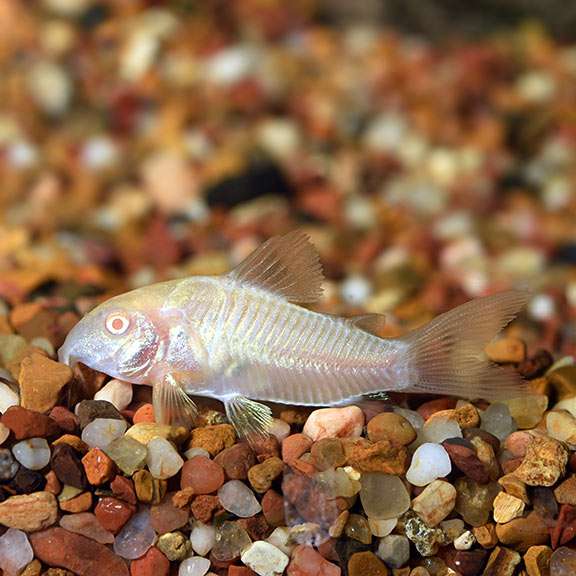
Size
2-3 inches.
Physical Appearance and Characteristics
Corydoras catfish are members of the Callichthyidae family of fish. To frighten off predatory fish, their dorsal, pectoral, and adipose fins are tipped with a little poison. The common name “Armored Catfish” refers to the fish’s overall armor-like look. Of the more than 180 species of Corydoras that are known, only around 50 are easily accessible to amateurs, and even fewer are professionally cultivated. Albino Cories are strongly advised for individuals just getting started in the hobby. These tiny fish are adaptable to several water habitats. When the sun is up, they hunt for food at the aquarium’s bottom, helping to keep the tank clean. Clicking of the pectoral fins is a form of courtship and communication.
Habitat
The majority of Cory cat species and their close relatives do best in water that is between 74 and 80 degrees Fahrenheit, pH 7.0 and 8.0, and alkalinity between 3 and 10 degrees dKH (54 ppm to 180 ppm).
Keeping as Pet

- Care of Aquariums
To eliminate their waste and keep the Albino Cory tank clean, routine water changes accompanied by siphoning of the gravel are essential. Their barbels are vulnerable to infection because of an unclean substrate. Depending on how high the bioload is in the aquarium, change 10% to 25% of the water weekly or biweekly; and 80% once a month to stay up with the bioload and for best health.
These fish will swim to the top to breathe air if the oxygen level falls, then swim back down. A sign that the water needs extra oxygenation is excessive gulping. It could be necessary to change the water or speed up surface water movement if air gulping starts to happen frequently. For this fish, an undergravel filter that is routinely vacuumed keeps the substrate clean and the entire tank oxygenated.
- Water Changes
Weekly water changes of 25% and 80% are advised to prevent the tank from becoming excessively contaminated. Once a month, 80% water changes are advised.
- Setup of an Aquarium
For these little, active fish, a minimum tank size of 10 gallons is advised; however, a school would do much better in a tank of 15 to 20 gallons. Compared to the majority of other Corydorus species, they prefer higher light levels and are more likely to be active throughout the day. These fish want a tank that is densely grown and has twisted roots for hiding. Driftwood and caves are also excellent hiding places.
Because the barbels on these fish are delicate, it is best to use sand or fine gravel to maintain them healthy. The barbels may actually be chopped down till they are completely gone by larger rocks with sharp edges. Additionally vulnerable to infection from an unclean substrate are the barbels. For this fish, an under gravel filter that is routinely vacuumed keeps the substrate clean and the entire tank oxygenated.
Table





